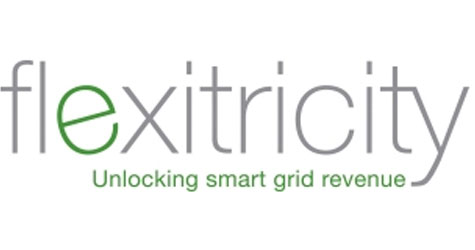First implementation of fast-acting aggregated reserve service successfully responds to frequency deviations for National Grid.
Edinburgh, UK – 11 October 2012 – Smart grid company, Flexitricity (www.flexitricity.com) today announced the first fully automated response to a frequency event via its Frontline service, a sub-one second demand response service for National Grid that allows companies to unlock revenue from their existing electricity generating and consuming equipment.
The company’s successful implementation of the service was conducted in partnership with the manufacturing plant of a global semiconductor company, whose on-site Diesel Rotary Uninterruptible Power Supplies unit (DRUPS) is connected to Flexitricity Frontline and configured to respond within one second to deviations in mains electricity frequency.
System frequency is controlled in real time by National Grid by balancing electricity demand with generation. If there is a shortfall in generation, such as when a large power station fails, frequency can fall. A frequency drop must be corrected very rapidly, meaning that sites must reduce load or increase generation within seconds.
Conventional responses to frequency deviation involve using power stations operating at part load or through other energy-consuming processes, but these responses are generally inefficient and increase national CO2 emissions.
Flexitricity Frontline is an automated smart grid system that aggregates frequency responsive capacity for National Grid, reducing loads and starting generation in less than one second.
“We are pleased to say that, after rigorous testing, the first implementation of Flexitricity Frontline functioned perfectly,” said Ron Ramage, chief executive officer, Flexitricity. “The frequency dip was recorded at 15:03 on 30th September and Flexitricity Frontline responded instantly, running our partner’s DRUPS units for a fixed 30 minutes and providing the extra generation needed to help balance the deviation.”
Many businesses are sitting on untapped sources of revenue in their on-site generation and electricity consuming equipment. Flexitricity unlocks this revenue for UK businesses, helping to increase asset reliability while reducing CO2 emissions at a national level.
As frequency deviation events are relatively rare, Flexitricity is remunerated by National Grid entirely on the availability of Flexitricity Frontline megawatt capacity.
Live metering signals to Flexitricity from participating sites validate the amount of response available to National Grid. For each site, where availability has been accepted by National Grid in a settlement period, an availability fee is paid to Flexitricity and shared with participating sites.
“We are now actively recruiting other partner sites with DRUPS units in addition to sites that can load drop quickly,” said Ramage. “Sites need to be able to reduce load or increase generation rapidly in response to a locally detected frequency dip. Normally, this means in less than one second, although sites that can respond in less than 10 seconds will be considered.”
Flexitricity created and operates the first, largest and most advanced smart grid system in the UK. The company’s technical team has spent over eighteen months developing and testing new hardware and software to support this new fast-response service.
Flexitricity Frontline is procured under a new contracting mechanism with National Grid and complements the existing portfolio of demand response and network balancing services offered by Flexitricity. The company also contracts to National Grid’s Short Term Operating Reserve (STOR) procurement mechanism.
About Flexitricity
Flexitricity Ltd. created and now operates the first, largest and most advanced smart grid system in the UK, bringing revenue to UK businesses, increasing asset reliability, reducing national CO2 emissions and helping to secure energy supplies. For more information on the company, visit www.flexitricity.com








